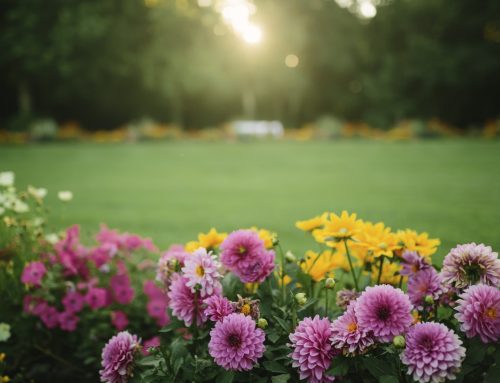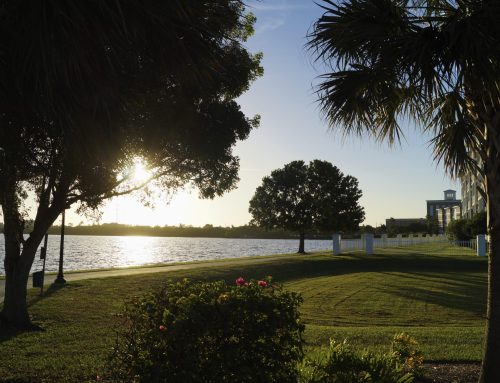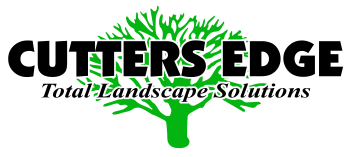Imagine Florida without the palm trees like you see on postcards, vacation advertisements or at your home. Palm trees have become a staple plant for most Florida landscape designs at resorts, residential communities, shopping plazas and are frequently seen lining our roads. Did you know that very few palm trees used in Florida landscapes are native to our state? You may also be surprised to learn that a palm is technically not a tree!
Palm trees may look quite hardy and easy to maintain, but actually they are quite sensitive to environmental changes and over pruning. It is very easy to over fertilize or use the wrong fertilizers on palms. Over or under watering and – most commonly – improper pruning of palm trees are mistakes that can cause irreversible damage to their trunks. By cutting into the palm or trying to create a tight boot to give them that iconic pineapple look, you can do some serious damage.
The most common native palms to Florida are: paurotis palm, Florida silver palm, buccaneer palm, and brittle thatch palm. The three most widely used palms for landscaping properties are: royal palm, cabbage palm and Florida thatch palm. These palms do better in the South Florida climate and are somewhat easier to maintain.
You may also frequently see varieties of palms in Florida such as cabbage palms and an assortment of non-native palms like: queen palms, foxtail palms and adenoidal palms (such as alexander or christmas). Date palms like sylvester, pigmy date and canary island have also become popular.
Did you know palms are more closely related to grass than trees, which are part of the dicot plant family? Palms are part of the monocot family. Most monocots will require more fertilizers than plants in the dicot family and bi-annual pruning. ANSI A300 are the generally accepted industry standards for tree care practices that have been adopted by most cities and counties for proper pruning. Some cities have now created even higher pruning standards than ANSI A300 and you can find these on your local authority’s website.
Some very common pruning mistakes that are made by beginners are ‘hurricane cuts’ or pruning above a parallel line of 9 o’clock and 3 o’clock; and ‘candle sticking’ a palm. Both of these methods will lead to the declining health of the palm and a large fine could be given if a gardener is caught pruning like this. When doing your annual or bi-annual palm tree trimming, the less fronds and leaves you remove the better. Palms and trees get most of their nutrients though a process called photosynthesis which converts light energy into a chemical energy. If you remove too many of a tree’s leaves, you can disrupt the fuel creation process that palms and trees need to grow and thrive.
Tree trimming is one of the most dangerous occupations. It is highly recommended to hire a licensed and insured company to handle your annual or bi-annual pruning projects. You are ten times more likely to be killed or maimed from tree pruning than being injured from a lightning strike or carrying out DYI roofing work.
Listed below are some items to consider.
Falling Tree Branches
Of course, falling branches aren’t the only potential issue with DIY tree felling. There’s always the chance that the person pruning the tree might fall and injure themselves. There’s a lot to be said for the height at which a fall from a tree could damage your back, arms or knees. Even a short tumble from a younger tree could be lethal if you land on your neck or on a sharp branch. Even the most careful tree owner is less likely to be prepared for these dangers than a professional tree maintenance technician.
Electrocution
Tree trimming professionals can often run into issues with electrical lines. Power lines hidden inside or behind branches, or among thick branches, can fall under your chainsaw blade without warning. The resulting injuries from this type of accident can vary from burning and disfigurement to being knocked out of the tree, and even death. Professionals know when and how to shut off power lines at the source. While a private tree owner might understand how an electrical system operates, they’re seldom licensed to work and manipulate it. Any injuries from this kind of work almost always end up being entirely avoidable if the homeowner hired professionals.
Injury from Tools
Another problem with DIY tree removal operations is the potential of hurting yourself with dangerous tools. Sophisticated chainsaw mechanisms, wood chippers, and cranes and pulleys can all malfunction. There are specific protective outfits and safety measures to keep in mind when working with these tools. If an injury occurs, there are ways to help mitigate the damage if you’re trained in a kind of specialized first aid. It’s best to put this kind of work in the hands of someone trained in handling these kinds of emergencies.
Rotting Wood
One of the most common problems with DIY tree trimming is the question of rotting wood. When a landscaper goes in to fell a tree, their priority should be whether the branch is rotten or weakened. Limp or weak points can be found at any point along a branch; and there’s a good chance that a weakened limb will break underneath your weight without any warning. Suddenly dropping out of a tall tree has its obvious dangers. Don’t risk your health or well-being by trying to do tree work yourself. Do the smart thing and let an expert handle it.
In Closing
Hiring a professional that has the education and training to maintain your palms is important. Professionals will be able to know the requirements of each municipality and have the certifications and appropriate license to pull any necessary paperwork like permits or mitigation requirements.
At Cutters Edge Pro we are expert landscape designers and have years of experience in dealing with your property’s landscape and tree care. Schedule your work order now or call fro a free estimate.





